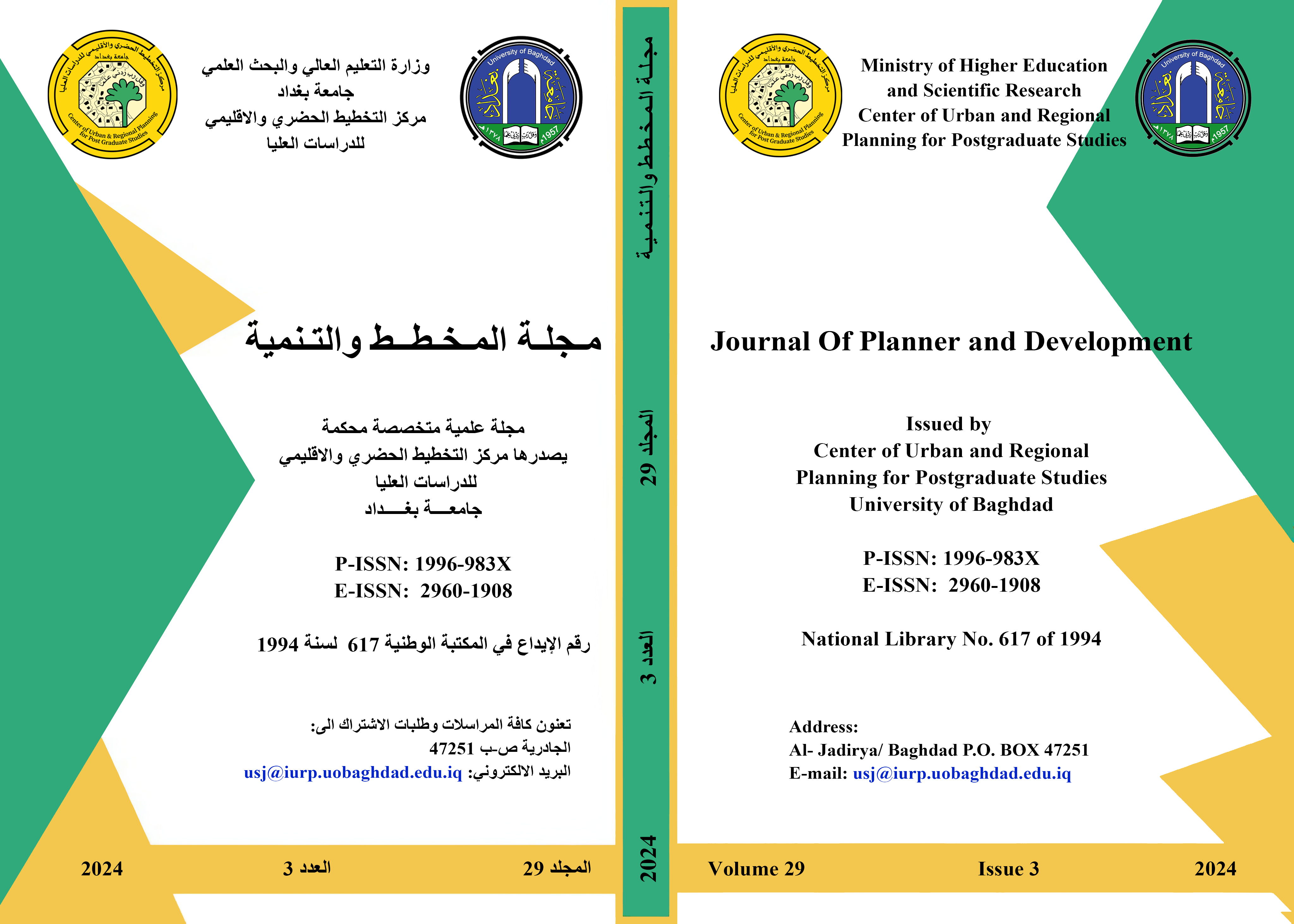Evaluation of the urban environment in vertical housing complexes/study area: Al-Haidariya residential complex
Keywords:
evaluation concept, urban environment, residential complexes, indicators of quality of life dimensionsAbstract
The research aims to evaluate the urban environment in vertical housing complexes by identifying indicators that contribute to this evaluation. The Haidariyah residential complex, located in the holy governorate of Karbala, is taken as a sample for the study. The research problem lies in the lack of clear indicators for evaluating the urban environment in vertical housing complexes. Therefore, the research hypothesis states that there is a set of indicators that help in evaluating the urban environment, which have been derived from the dimensions of quality of life. Applying the concept of quality of life is important at all levels, especially within the urban environment, as it is considered one of the successful solutions to the problems faced by vertical housing complexes and is also a form of creativity in urban planning. This is based on literature and studies represented by contemporary urban planning theories and human needs theories. The most prominent of these indicators are (urban dimension indicators, social dimension indicators, economic dimension indicators, and environmental dimension indicators). The research adopted the descriptive analysis approach to show the degree of residents’ satisfaction. The study results revealed that residents are dissatisfied with most of the services within the residential complex, as the Haidariyah complex suffers from weaknesses in educational services, health services, infrastructure services, lack of privacy, and lack of security due to the absence of advanced technical and administrative systems represented by surveillance cameras and guards within the residential complex. The research end with a set of conclusions and recommendations related to the research topic.



